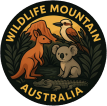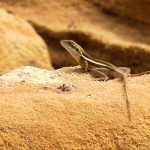HORNER'S DRAGON
Horner’s Dragon (Lophognathus horneri)
| Feature | Details |
|---|---|
| Scientific Name | Lophognathus horneri |
| Common Names | Horner’s Dragon, Kimberley Frilled Dragon |
| Family | Agamidae (the dragon lizard family) |
| Endemic to | Northern Australia (mainly Kimberley region) |
| Described | 2009 (named after zoologist Paul Horner) |
Appearance & Identification
- Size: Medium-sized dragon, usually 20–30 cm from nose to tail tip.
- Colour: Typically sandy or grey-brown—great camouflage for the Aussie outback!
- Distinctive Features:
- A pronounced
frillaround the neck (not as dramatic as the classic frilled lizard, but quite stylish nonetheless). - Agile limbs and a long, slender tail.
- Spiky scales that would make a punk rocker jealous.
- A pronounced
Habitat & Range
- Where: Prefers rocky outcrops and woodlands—especially in the Kimberley region of Western Australia and a bit into the Northern Territory.
- Adaptations: Great climber and sprinter, adept at zipping across rocks or darting into cracks to avoid hungry predators.
Behaviour & Lifestyle
- Diurnal: Loves to bask in the sun (who can blame it?). Most active during the day.
- Diet: Primarily insectivorous—think ants, beetles, and the occasional adventurous spider.
- Reproduction: Lays eggs (yep, it’s an oviparous reptile). Females dig burrows to deposit their clutch, then let the warm earth and the sun do the rest.
Conservation Status
- Status: Not currently listed as threatened, but it’s a relatively newly described species, so there’s still much to learn. Horner’s Dragon was only formally described in 2009, despite living in the region for millennia—just goes to show hidden gems can still be discovered!
- Threats: Habitat loss and climate change could pose future risks.

